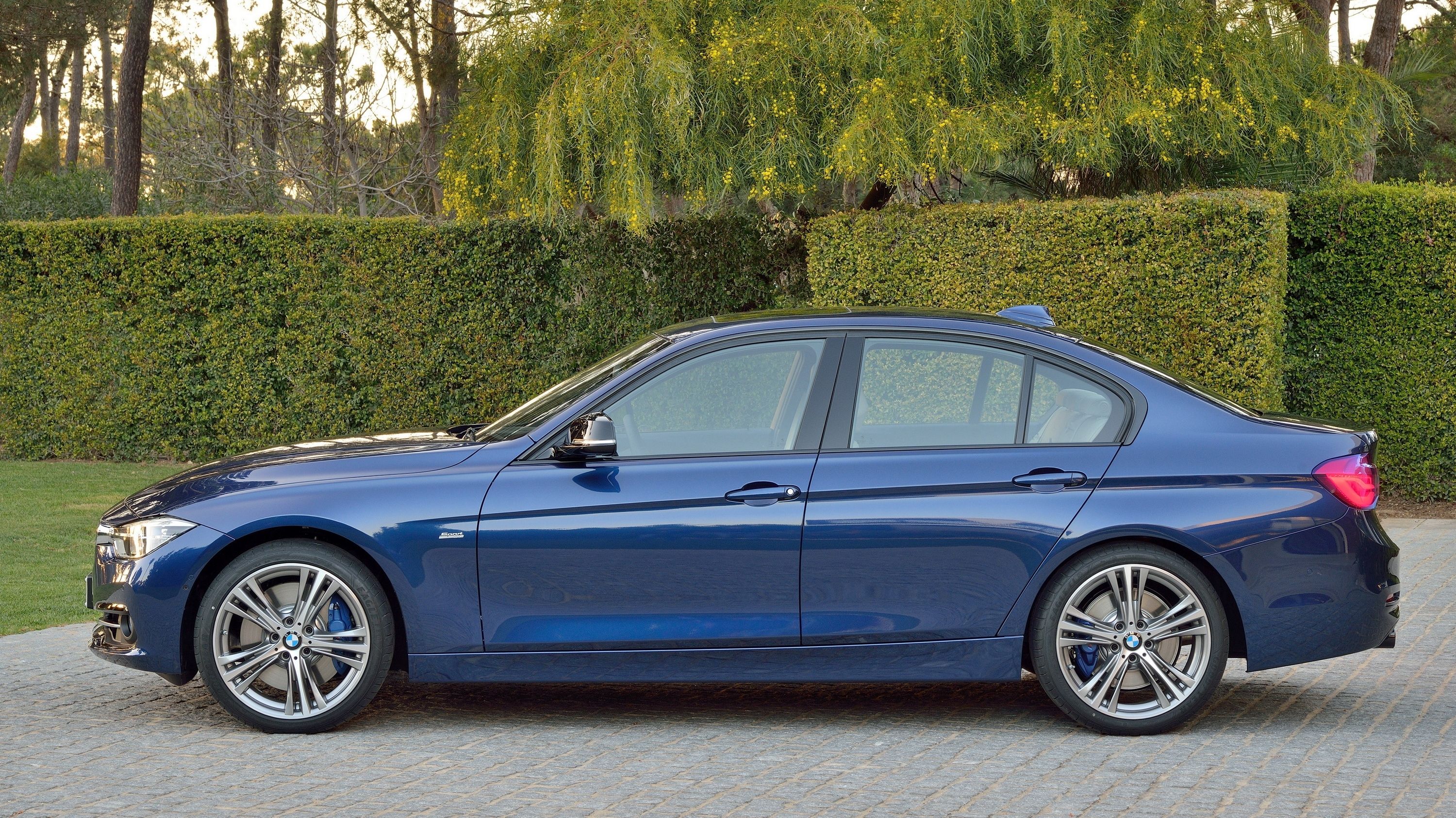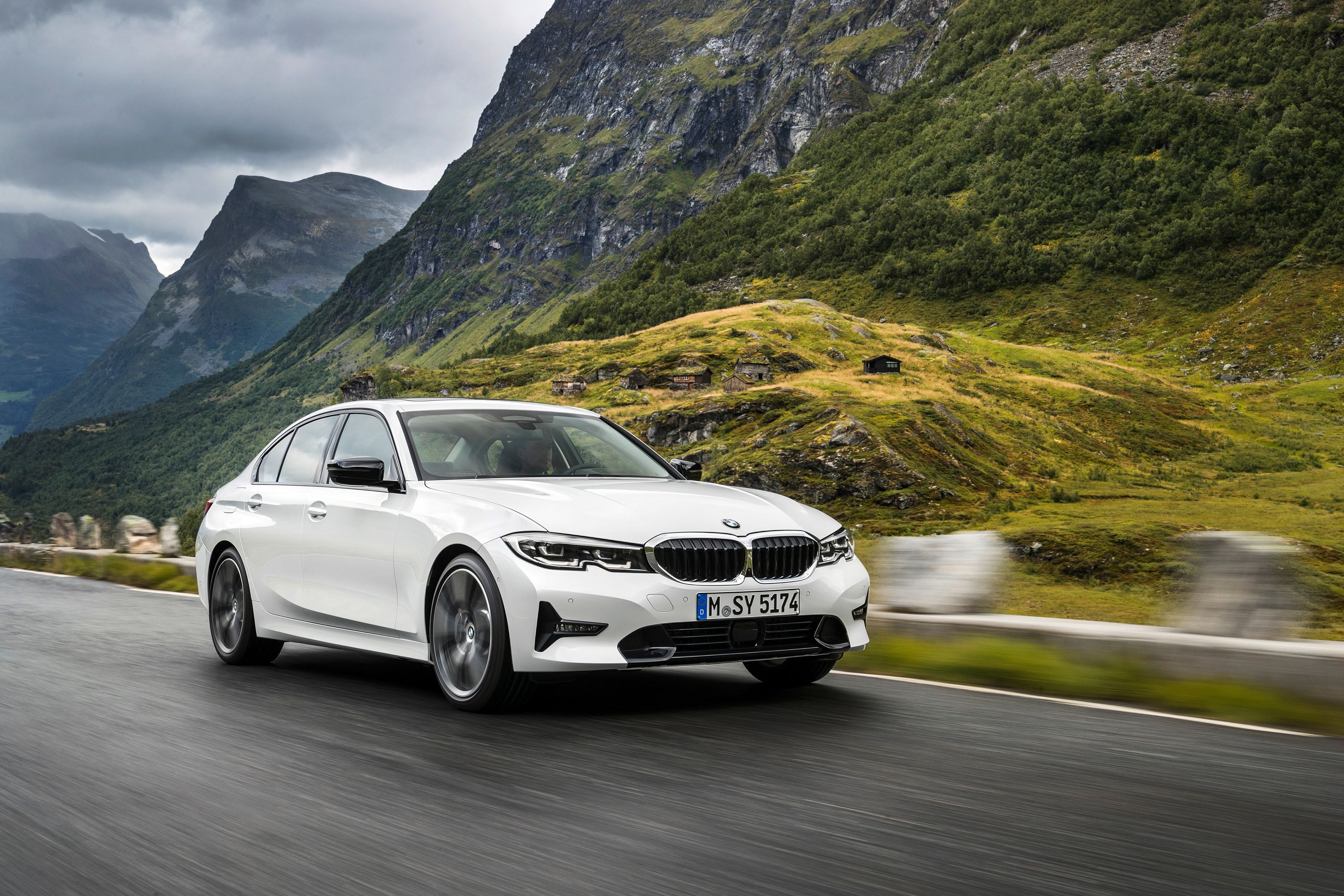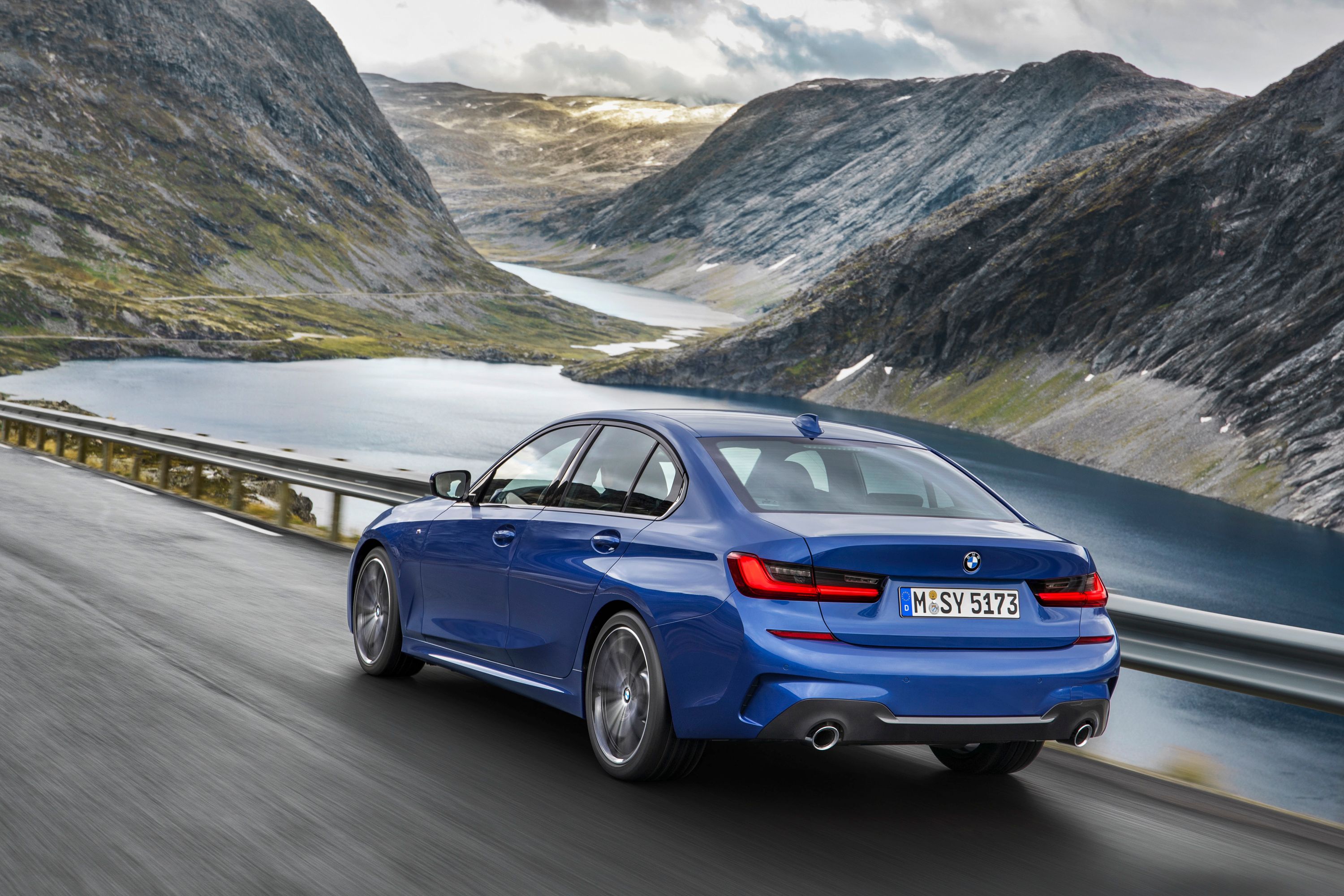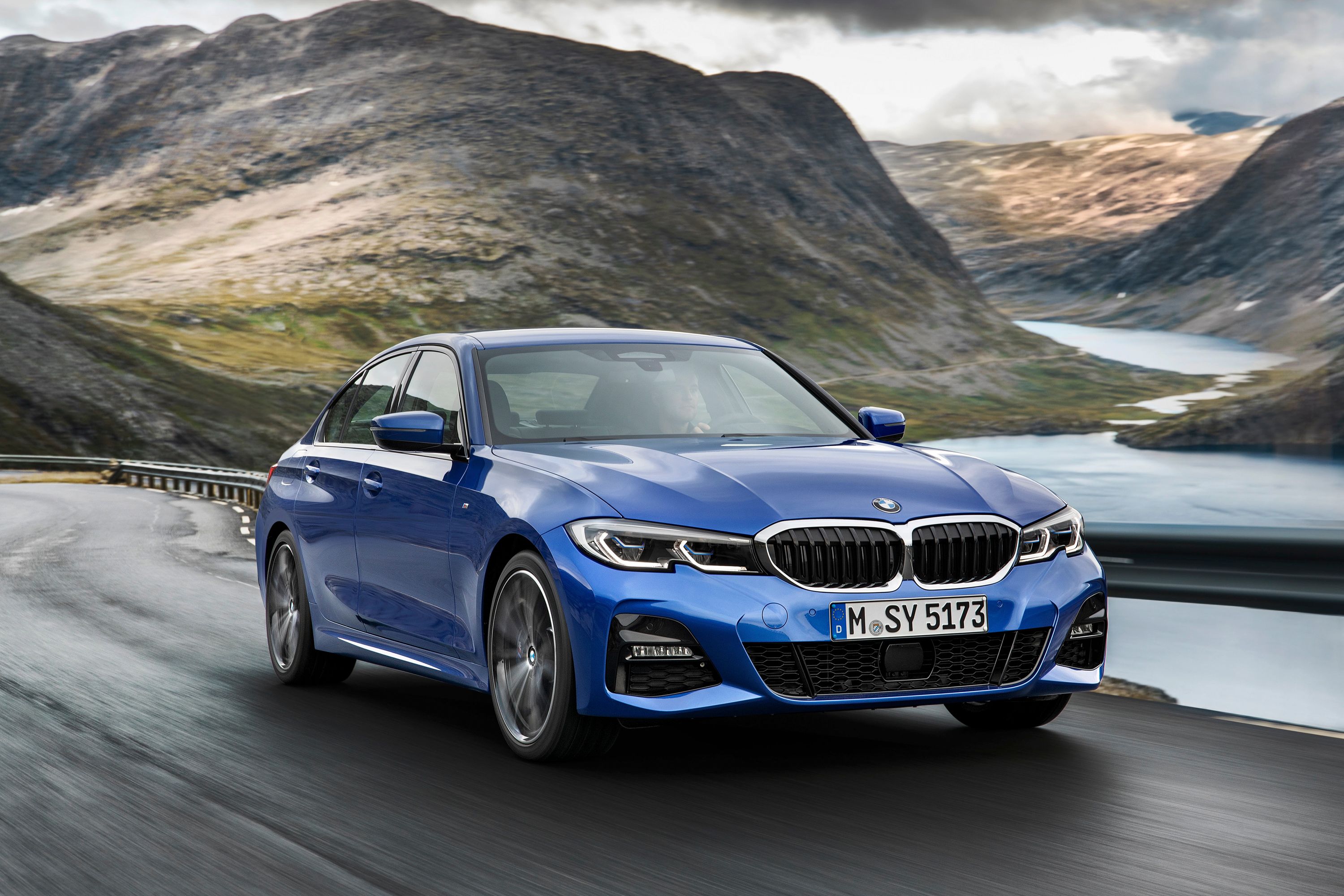BMW has unveiled the seventh generation 3 Series, signaling a new era for the company’s iconic compact luxury sedan. The new 3 Series is a lot bigger than its predecessor, effectively questioning why we still call it a compact sedan. There’s nothing “compact” about the new 3 Series. Not only is it larger than any 3 Series on record, but it’s also lighter, more powerful, and filled to the brim with a lot of interesting tech features. At launch, the new 3 Series will be available in 330i and 340i trim levels. More versions, including the next-generation M3, will become available in the future. Pricing for the new 3 Series starts at $41,245.
Exterior
One of the most noticeable elements of the seventh-generation BMW 3 Series is how big it is. It’s not big compared to its predecessor. It’s just big. The new 3er measures 185.4 inches long, which is 3.5 inches longer than the sixth-generation 3 Series.
Front
|
|
ids=799799,799798 |
no_overlay=true> |
It’s not hard to see the difference in design between the 2018 3 Series and the 2019 3 Series. The latter adopts Bimmer’s new design language, and the visual details give us clarity on all the changes the new 3 Series went through. BMW’s famous kidney grille sits at the heart of these changes. It’s larger now than it’s ever been, and it’s visually connected to the twin headlights that themselves have become staples in BMW’s identity. The headlamp configuration is different in the new 3er, too, at least compared to its predecessor.
Side
|
|
ids=799802,799804 |
no_overlay=true> |
The side profile of the new 3 Series is also vastly different from the previous-generation model, largely because of BMW’s decision to use character lines differently on the new model. The 2018 3 Series featured a deep horizontal line cutting across the door handles and stretching all the way to the rear quarter line. This type of line is typically used to emphasize a car’s stance, and it was effective on the 2018 model. Less pronounced lines can also be seen near the sedan’s skirts.
BMW turned the tables on the all-new 3 Series.
We mentioned the new 3 Series’ length earlier, and this is the angle where you can really see it. The hood, for example, is a lot longer. The coupe-like roofline is also more prominent in the new model. Same thing with the rear section, which benefits from a more pronounced spoiler lip. Even the bulge on the rear bumper adds to the new 3 Series possessing a more dynamic profile than its predecessor.
Rear
|
|
ids=799800,799801 |
no_overlay=true> |
Look at the rear section of the new BMW 3 Series by layers, and you’ll see how dramatically different it looks compared to its predecessor. Up top, the spoiler lip extends a little further away from the sedan’s body.
Interior
|
|
ids=798125,629391 |
no_overlay=true> |
Big changes are afoot in the interior of the all-new BMW 3 Series, including what is perhaps the biggest upgrade in the model: the digital instrument cluster. It’s a massive leap forward from the instrument cluster on the 2018 model.
There are a lot fewer controls in the new 3 Series, too. Buttons for the air-conditioning sit at the center of the instrument panel while the light functions are controlled through a panel of buttons next to the steering wheel. Even the start/stop button is now located in a control panel in the center console. It's in this section where the driver can also find buttons for the gearshift lever, the iDrive Controller, electromechanical parking brake, and the buttons for the Driving Experience Control switch unit. Essentially, some of the controls located in the 2018 3 Series’ center stack have been relocated to the instrument panel right beside the driver. It’s definitely easier to locate, and it removes a lot of the clutter that from the center stack.
I’m not going to dive in on the specific equipment and options available for each trim level of the 3 Series. Just know that, in typical BMW form, there are plenty to choose from.
By virtue of its bigger size, there’s also more space inside the new 3 Series. Shoulder room in the front of the cabin has been increased while passengers in the rear have more legroom. Headroom has also improved while the door aperture height has also been increased, making it easier for rear passengers to get in and out of the car.
Technology
As you might expect, the all-new BMW 3 Series is not messing around when it comes to technology. It’s dripping with tech bits to the point that it might as well be a supercomputer on four wheels. Running through all the tech features of the new 3 Series is an exercise in patience, so I’m focusing on a few new items, one being the BMW Intelligent Personal Assistant, which, essentially, is BMW’s version of Amazon’s “Alexa,” Google’s “Hey Google,” or just about every other virtual assistant that’s come out in recent years.
The other new tech feature of the 3 Series is the BMW Digital Key. Technically, the BMW 8 Series and the G05 X5 SUV were the first two models to get the Digital Key. The all-new 3 Series is getting it, too, and it’s getting it at the right time. The Digital Key allows a smartphone to be used to lock or unlock the 3er. Basically, your smartphone becomes your car keys. In addition to locking and unlocking the 3 Series, you can also start the engine by simply placing your smartphones in a wireless charging or smartphone tray. Pretty nifty, right?
These tech features are not available in the 2018 BMW 3 Series.
Drivetrain and Performance
Engine variety is one thing that the 2018 and 2019 BMW 3 Series models share.
The other engine that’s been announced for the new 3 Series is a 2.0-liter turbocharged four-cylinder for the new 330i trim that produces 254 horsepower and 258 pound-feet of torque. There’s no direct comparison from the previous-generation 3er, but the closest we can think of is the 328i, which carried a similar engine that produced 250 horsepower and 258 pound-feet of torque.
More trim options of the new 3 Series will arrive in the coming years as BMW builds up the 3 Series G20 family.
Final Thoughts
There should be no question in anybody’s mind that the BMW 3 Series is one of the most recognizable models in the entire automotive industry. Despite the growing popularity of crossovers and SUVs, the 3 Series remains a huge draw. So what happens when BMW launches a next-generation 3 Series that has fresh styling, an all-new interior, a larger profile, and a smorgasbord of state-of-the-art technological features? Well, we won’t have to wait long for an answer. The all-new 3 Series launches early next year. Expect the BMW-loving contingent of the industry to come out in droves looking to score one for themselves.
Further reading
Read our full review on the 2020 BMW 3 Series.
Read our full review on the 2017 BMW 3 Series.




